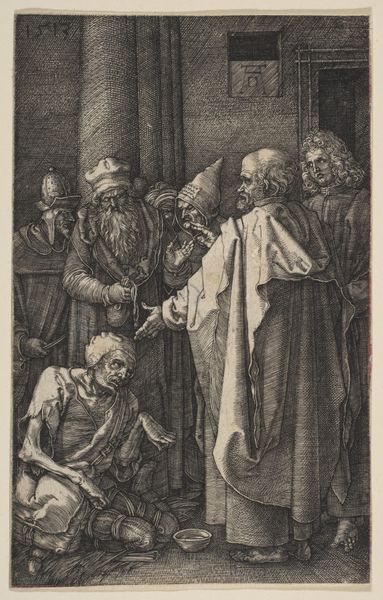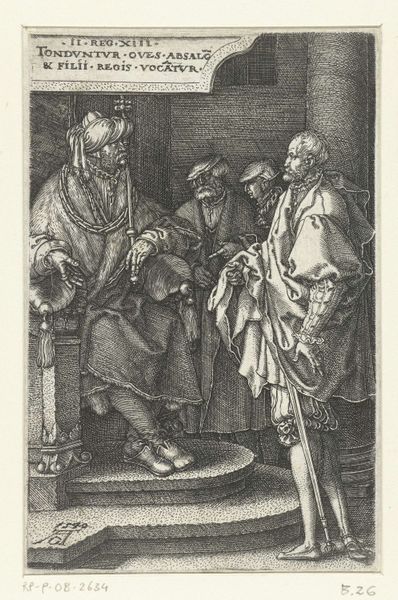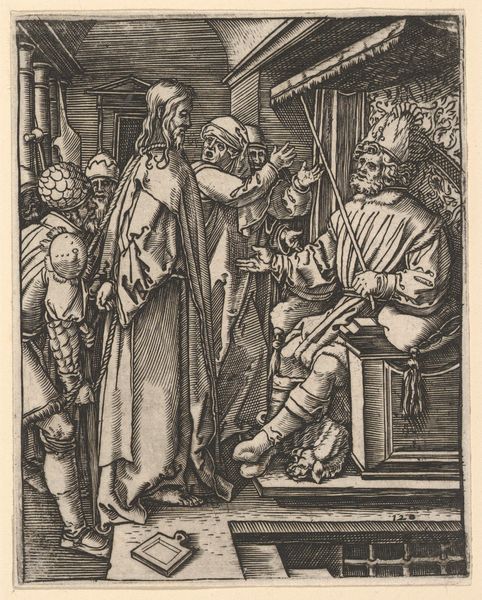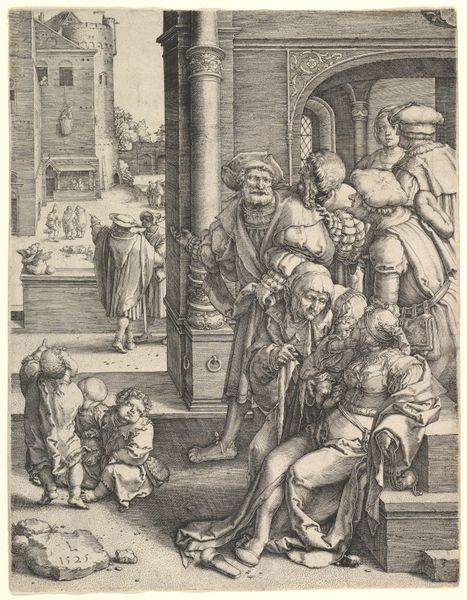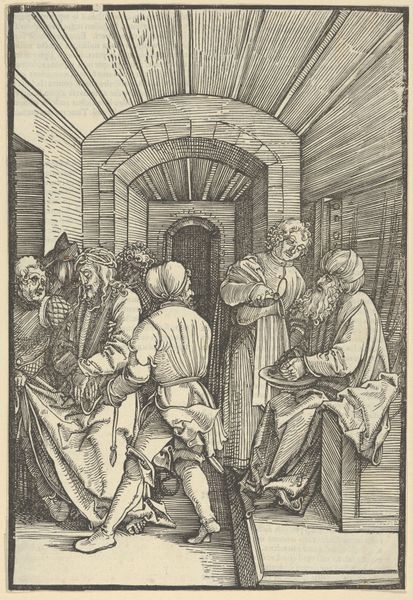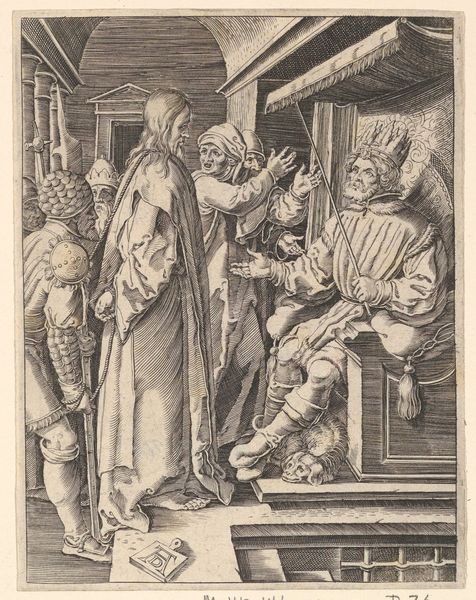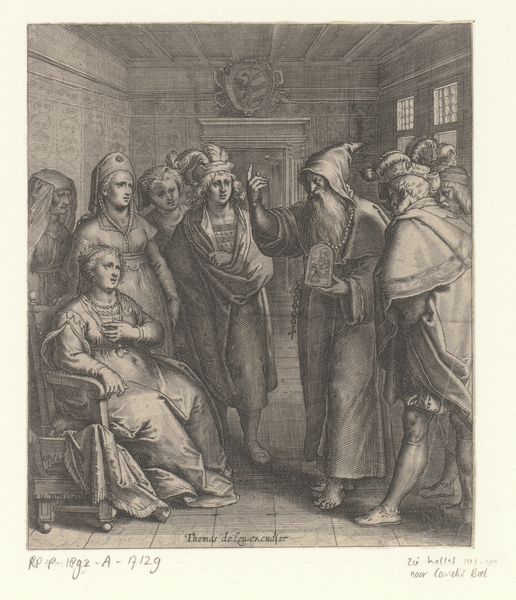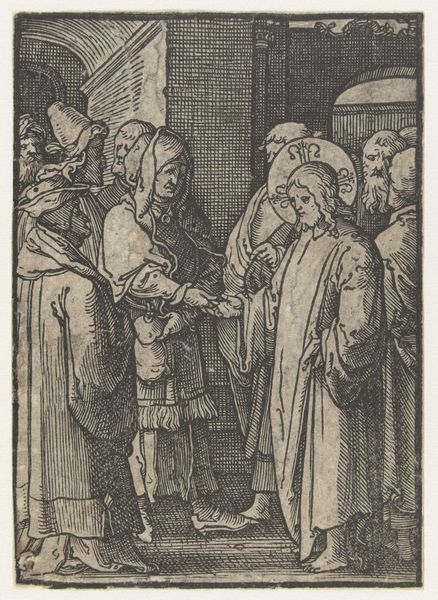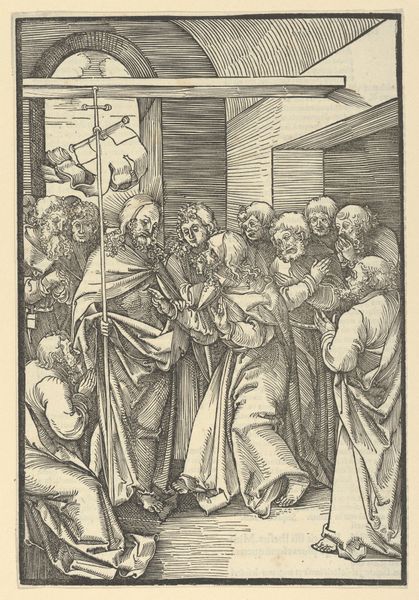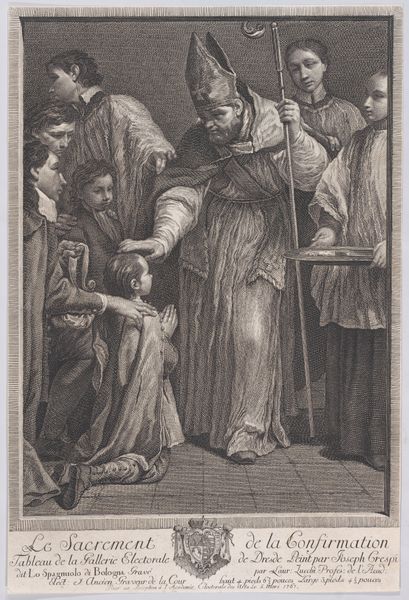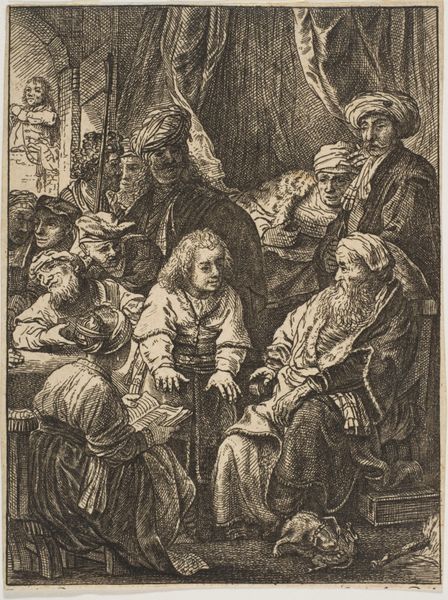
St. Peter and St. John Healing Cripple at Gate of Temple 1513
0:00
0:00
print, engraving
#
narrative-art
# print
#
figuration
#
line
#
history-painting
#
northern-renaissance
#
engraving
Dimensions: 4 5/8 x 2 15/16 in. (11.75 x 7.46 cm) (image)
Copyright: Public Domain
Curator: This is Albrecht Dürer’s engraving, "St. Peter and St. John Healing Cripple at the Gate of the Temple," created in 1513. It's currently part of the collection at the Minneapolis Institute of Art. Editor: It's striking how Dürer uses the stark lines to convey the mood—a combination of hope and desperate need, all in monochrome. Curator: Absolutely. The linear quality and tonal range achieved solely through the engraved line is compelling. Dürer mastered the capacity to define form, space, and light within this strict technical framework. It’s important to examine how he employs the Renaissance concern for classical ideals—the architecture behind the figures emphasizes proportion and order. Editor: But look at the way those "classical ideals" are contrasted against the tangible reality of suffering in the early 16th century. This wasn’t some detached, idealized philosophy. The Church, which these apostles represent, wielded immense political and social power and influenced society. Dürer positions faith against social responsibility and economic disparities within the rising merchant class. The encounter isn't simply spiritual, but actively involved in addressing socio-economic issues. Curator: One cannot ignore how the gestures of Peter and John create directional lines that lead our eyes across the composition. The placement of figures, from left to right, contributes to this sense of movement and underscores Durer's understanding of classical compositional theory, directing focus through form. Editor: And I see something profoundly more important! How the posture of the crippled man contrasts with the clergymen standing firmly to highlight the unequal relationship. Are they elevating, helping, ignoring him? Curator: This engraving offers a study in masterful control over a challenging medium. A focus on composition helps us comprehend Dürer's remarkable skill as a draughtsman. Editor: Through that craft, Dürer’s engraving provides us not just an artistic achievement, but raises potent issues about power, responsibility, and justice in the early 16th Century, topics which we still encounter today.
Comments
minneapolisinstituteofart almost 2 years ago
⋮
This last scene of the "Engraved Passion" has been left out of most of the old copies preserved. Since this subject lies outside the scope of a Passion series, Dürer cannot have intended it to be the final sheet, but must have planned to add further subjects which were never completed. It depicts a New Testament episode in the Acts of the Apostles (3:1-10), in which Peter and John heal a cripple begging outside the Beautiful Gate of the temple in Jerusalem. The cripple's disease has been identified as leprosy. Despite scholarly speculation that Dürer visited Florence during his second trip to Italy, this has never been proven. Yet he must have seen a copy of Masaccio's fresco of St. Peter Healing a Cripple with his Shadow (c. 1427) in the Florentine church of the Carmine, since the composition of this engraving is so similar. Dürer's mastery of classical form and monumentality are clearly evident.
Join the conversation
Join millions of artists and users on Artera today and experience the ultimate creative platform.
